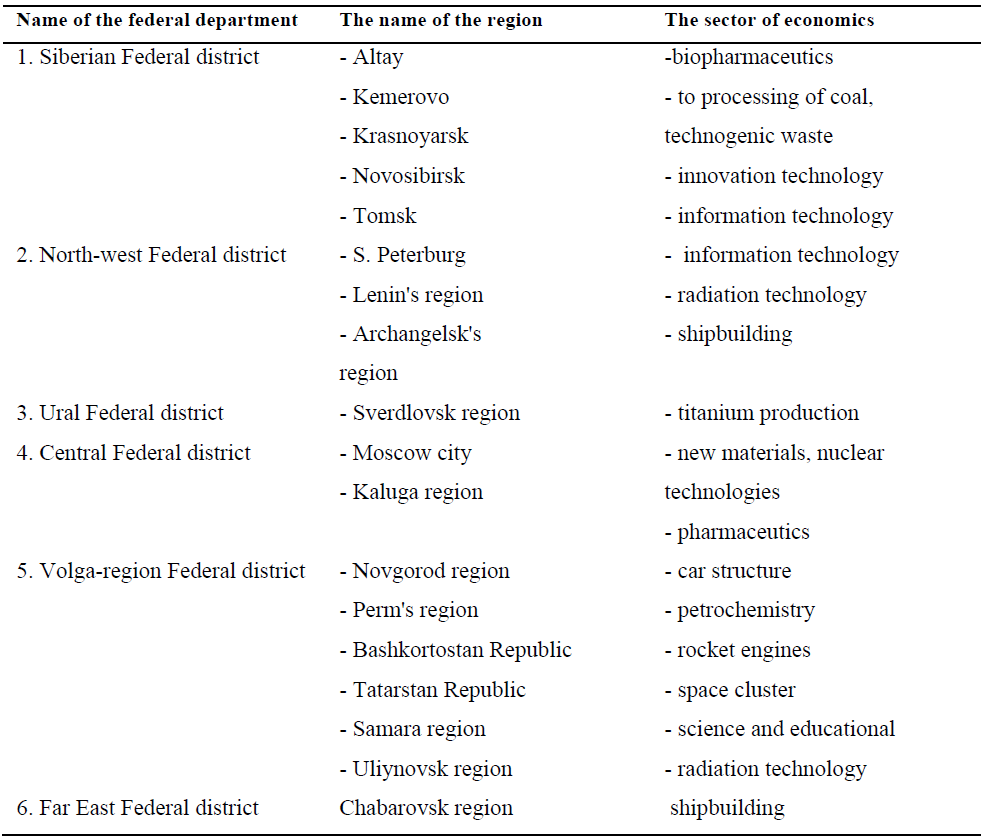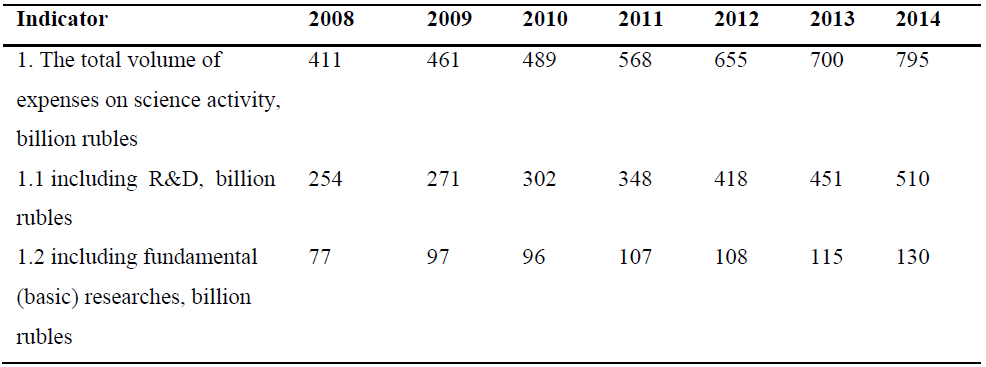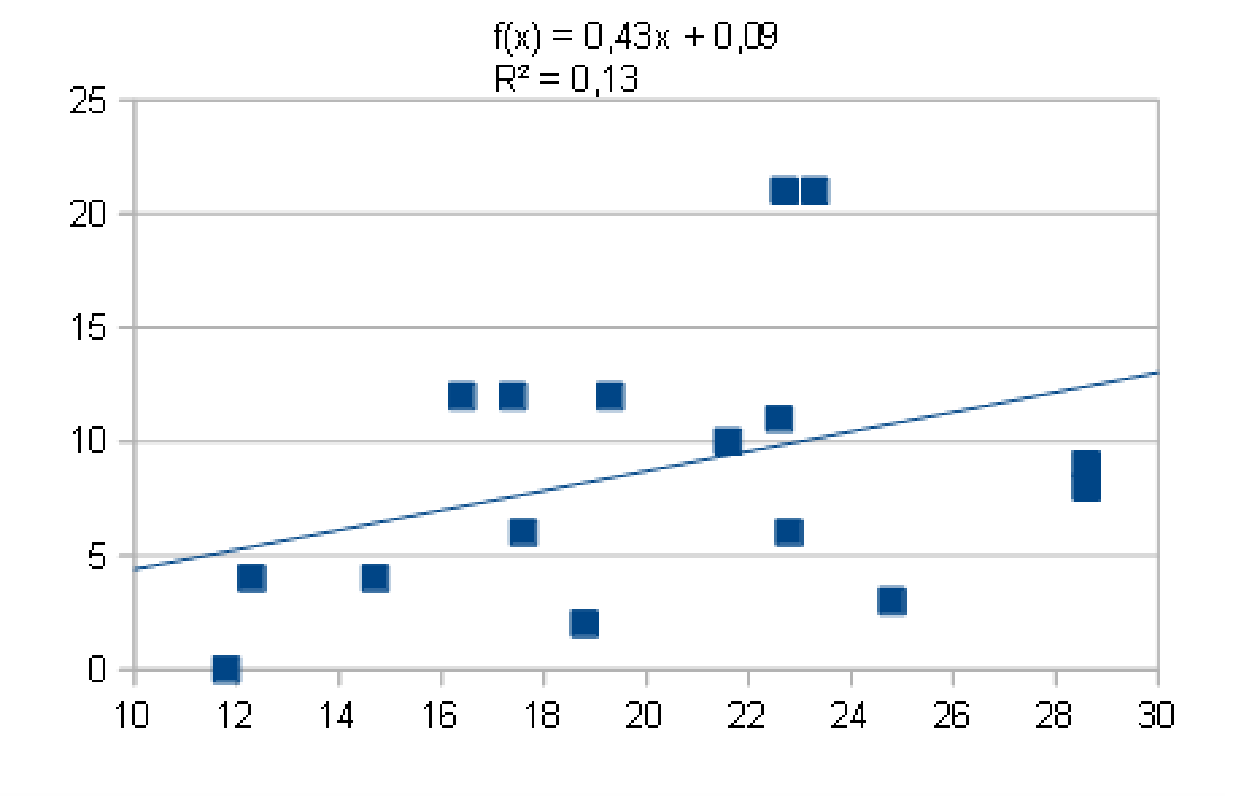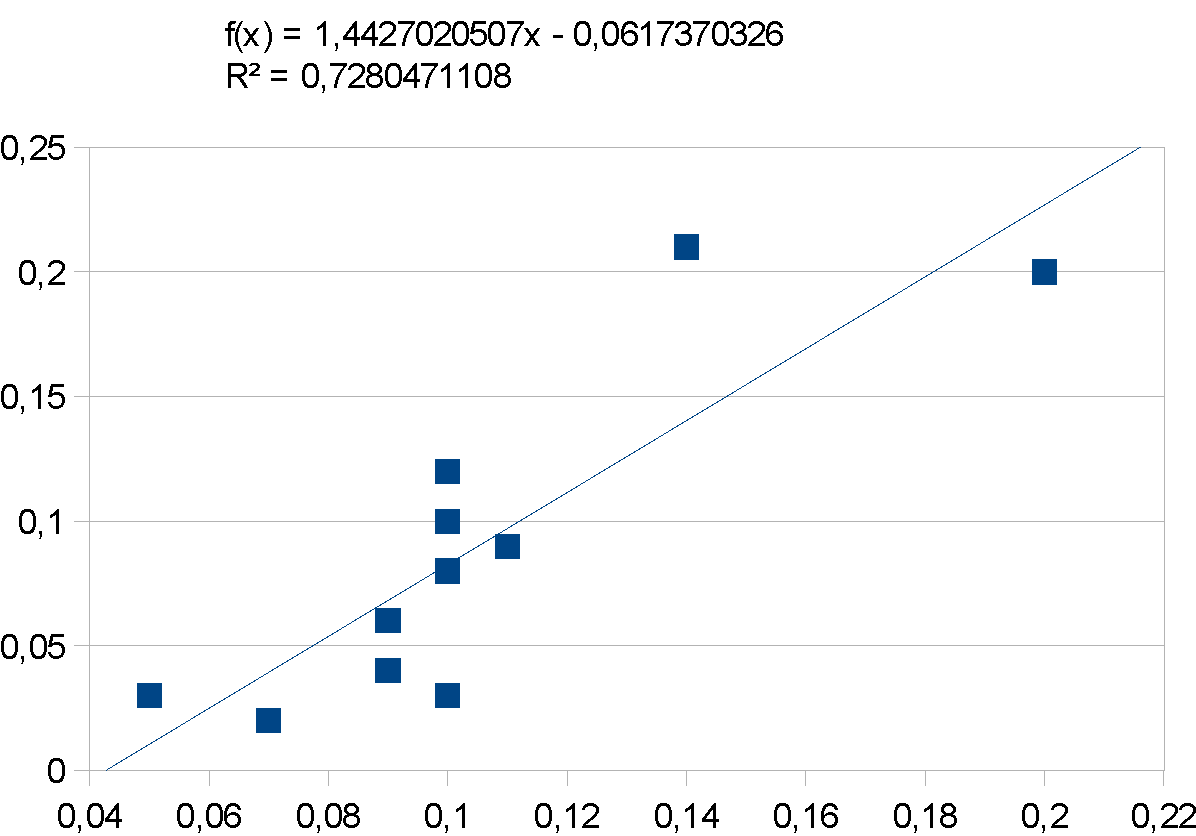Abstract
The influence of factors is considered in the work: the capital costs financed from funds of the federal budget and the organizations involved in the sphere of research and development activities for increase in a share of innovative products in a total amount of manufactured goods in the territory of innovative clusters. The considered clusters are located in the territory of the following federal districts: Northwestern, Siberian, Volga - region, Central and Ural Districts in the Russian Federation. Relevance of research is caused by the fact that development of regional economy within clusters are considered as the main condition of economic growth now. A consequence of network interaction of the anchor production enterprises and the organizations which are a part of a cluster in the sphere of Research and Development is acceleration of innovative process that leads to increasing in a share of innovative products in a total amount of manufactured goods in the territory of innovative clusters.
Keywords: Regional cluster, innovation growth, government policy
Introduction
In the conditions of globalization of competitive and cooperation communications of accounting
entities, the increasing value is purchased by cluster strategy of development of region’s economy.
Within a cluster, forming of model of economic growth of region economy happens with the smallest
transactional expenses. Economic growth of systems in the conditions of globalization is considered in
the works of Alesin, Roubini, Swagel, Kaldor, and Solow. Modern researches in the field of cluster
policy have rather fully proved the theoretical importance of this process in development of regions.
Further it is necessary to create and implement the systematized groups of indicators of an assessment
of cluster activities. According to the author, as a basis of an assessment of activities of a cluster in
post-industrial economy it shall become the system of the economic indicators reflecting social and
economic effect of interaction of the participating entities of a cluster in the course of cooperation and
the competition. Combination of two opposite processes perhaps thanks to the fact that they happen in
the different planes and between different participants. Porter M. (Porter, 2007) determines the regional
innovative (or industrial) cluster in the works as geographical concentration of the separated business
units, service providers, raw materials and materials, the coordinating centers, associations of institutes
of the specialized directions and areas.
As features of reasons and implementation of cluster policy, the following fundamental
prerequisites in the territory of the Russian Federation become:
1) activities of the territorial and production complexes (TPC) till 1990th;
2) current existence of Federal Target Development programs of industries of economy,
construction of facilities of infrastructure in the territory of clusters and forming of free economic
zones in regions;
3) prevalence of the state participation in innovative development of the participating entities of
clusters of chemical, pharmaceutical industries and mechanical engineering;
4) presence of a large number of research and design institutes and organizations within the military
industrial complexes specializing now in the field of aviation, petrochemical, military-industrial
production;
5) a voluntary business and organizations merger in consecutive production processes that leads to
unilateral management of corporation within vertical integration.
According to M. Porter (Porter, 2007), the concept of clusters promotes the development of a
special form of the political and state thinking which is beyond gross requirements of economy. The
thinking based on cluster approach can direct the policy for science and technology, education and
professional training. At the same time, it is necessary to consider that formation of market relations
between subject in the territory of regions of the Russian Federation happens since the end of the
1990th years. Porter M. (Porter, 2007) claims that clusters in the conditions of the developing economy
not only include less participants. Many of them take the form of the structures with strong hierarchy
containing a network of communications and surrounded with a small number of the large companies
forming a cluster kernel. In the works of Gordon and MacCann (Gordon, & McCann, 2012) it is
confirmed that the interregional clusters including the high-concentrated entrepreneurial networks are
capable to provide successful innovative development of the entities and organizations in the territory
of regions, and development of competitive advantages. At the same time, it is impossible to forget that
innovative development implies availability as a part of participants of a cluster of the organizations
performing the activities in the sphere of Research and Development and further creating an innovative
product. Availability of cooperation horizontal communications between the organizations in the
sphere of Research and Development and production enterprises, business incubators, science and
technology parks provides the creation of an innovative product. Kowalski claims, (Kowalski, 2014)
that clusters stimulate horizontal cooperation communications between research organizations and the
entities implementing results of researches and developments directly in production process. According
to Sallet, Paisley and Masterman (Sallet, Paisley and Masterman, 2009) innovations act as an exclusive
factor of economic growth in the long term. However, they assume that the innovation can create and
stimulate their development, identifying this mechanism with cultivation.
For this reason, the assessment of social and economic consequences of creation and functioning of
cluster education should be carried out in the following groups of indicators:
− the indicators characterizing structure of production of clusters, resource potential of a cluster and economic activity of a cluster;
− the indicators reflecting efficiency of usage of the intellectual equity within a cluster (in
particular, synergy effect of joint use of key spheres of competences and intangible assets within a
cluster, such as the cost of consumer assets, information technologies, infrastructure assets and so
forth);
− the indicators considering external and internal institutional factors in the companies - participants of a cluster (for example, the level of transactional expenses).
Problem statement
Support of innovative clusters in the territory of the Russian Federation is performed by means of
the Programs allocating funds of the federal budget for reconstruction and upgrade of a property, plant
and equipment of the participating entities of clusters, creation of business incubators, assignment for
Research and Development, creation of infrastructure facilities in the territory of regional clusters. It is
necessary to find out how effective this mechanism of the state support is. Therefore, Dan (Dan, 2012)
assumes that support of clusters shall be not unconditional, but be under construction based on
empirical data and the analysis of the processes happening in each specific spontaneous created cluster.
Only in this case the cluster will provide economic development of regions. As Chloe and Roberts
assume (Chloe, & Roberts, 2011) the role of the state in this process is considerable and allocate it in
one of key components of development of the cluster-oriented economy.
On the other hand, in modern market conditions a role of the intellectual equity in creation of an
innovative product certainly is big. Presence in the territory of innovative clusters of organizations
performing the activities in the sphere of Research and Development shall provide increase in a share
of innovative products in a total amount of the realized goods in the territory of innovative clusters. In
this context as an innovation, we mean the usage of results of scientific researches and developments
for the purpose of change of object of management and receipt of the following effects: economic,
social, ecological and so on. In this case, the innovation and technology centers, technology parks,
technology incubators) act as an innovative infrastructure in territorial innovation clusters. Creation of
these objects of innovative infrastructure in the territory of regional clusters is supported within Target
state programs of development with use of means of federal and regional budgets. In the work it is
considered dependence between a share of the organizations occupied research with developments in
total number of the organizations and entities in the territory of clusters and shares of innovative
products in the total amount of manufactured goods of hectare of the territory of innovative clusters
Research Methods
In the work the authors considered results of activities of those regions in the territory of which
innovative clusters in the Russian Federation are located . Now in the territory of the Russian
Federation there are more than 20 innovative clusters performing the activities in various industries that
is reflected in Table 1:
- information technologies and electronics;
- new materials;
- production flying and spacecraft, shipbuilding;
- pharmaceutics, biotechnologies and medical industry;
- chemistry and petrochemistry;
- nuclear and radiation technologies.

In the Russian Federation, it is observed the annual growth in volumes of financing in the sphere of
science and scientific researches for the last eight years, according to data of official statistics that it is
reflected in Table 2. As we see, more than a half of amounts of the state costs for activation of scientific
activities is the share of costs for Research and Development. But annual rate of a surplus of these
investment investments does not exceed ten percent.

(Source: The Official Federal Government site of cluster's statistics data in the Russian Federation, 2014)
It is used the data for creation of the charts reflecting extent of influence of the state participation
on increase in a share of innovative products in the total amount of the made products, on the one hand.
On the other hand, a share of the organizations occupied in the sphere of Research and Development on
increase in a share of innovative products in a total amount of the made products.
Findings
The regression analysis given by the author and shown in Figure 1 was made to evaluate functional
relationship of the effective index conditional average (the share of innovation product sales proceeds
in the total volume of revenue) and the factorial index (the share of the government investments to the
reconstruction and modernization of fixed assets in the total volume of investments) on the territories
of innovation clusters pointed out in Table 1:
f(x)=0.43x+0,09 (1)
R²=0.13 (2)

x- the share of the government investments to the reconstruction and modernization of fixed assets in the total volume of investments, percent; y- the share of innovation product sales proceeds in the total volume of revenue, percent.
Source: Author's work The regression analysis given by the author and shown in Figure 2 was made to evaluate functional
relationship of the effective index conditional average (the share of sold innovation products in the
total volume of revenue) and the factorial index (the share of R&D organizations in the total quantity
of enterprises) on the territories of innovation clusters pointed out in Table 1:
f(x)=1,44x+0,062 (3) R²=0.72 (4)

x- the share of R&D organizations in the total quantity of enterprises, shares of units;
y- the share of sold innovation products in the total volume of revenue, shares of units.
Source: Author's work.
Conclusion
The paper deals with innovation activities of enterprises and organizations located on the territory
of various federal districts: Northwestern, Siberian, Volga - region, Central and Ural Districts. As it is
seen from Table 1, each federal district has its own innovation cluster. The peculiar feature of all these
clusters is that their activities are inspired by state investments directed to reconstruction and upgrading
of capital assets as the share of cumulative investment in fixed-capital assets. The outcome of such
state stimulation of enterprises’ activities is the enlargement of innovation produce share in the total
volume of produced and shipped goods, works done and services rendered. We considered the given
key figures on the abovementioned cluster territories apart from the Arkhangelsk Region and the Perm
Territory. The received quantitative expression of dependence of specific weight of the made
innovative products in a total amount of release from a key factor - the number of the organizations
occupied in the sphere of Research and Development is created with use of linear regression in which
the coefficient of determination is 73%. What allows using this dependence in further forecasts for
production of innovative products for the territories of innovative clusters? Especially important the
fact that in case of increase in number of the organizations occupied in the sphere of Research and
Development at 1%, the growth of a share of innovative products in a total amount of release is 1, 44%.
At the same time increase in a share of the investments directed to upgrade and reconstruction of
plant assets is not always followed by growth of specific weight of innovative products in a total
amount of release. The linear regression model of selected parameters was preconditioned by nothing
else but 13%. In the given case, pure 13 % change of innovation produce share is conditioned by the
enlargement of the investments share allocated to reconstruction and upgrading in the total volume of
investments. From the one hand, it confirms that active stimulation of economic entities’ activities on
the territory of clusters not always gives positive effects. From the other hand, the given model proves
permanent increase of innovation produce share in the total volume of goods, works and services.
Therefore, if the share of investments in reconstruction and upgrade in the total volume of investments
is not increased but the share of innovation produce is increased by 9%, it definitely shows positive
effect. It also says that clusters are capable of producing innovation activities using other (not financial)
growth factors, that is, intellectual potential (capital) formed on the abovementioned territories.
Therefore, in the subsequent periods one can expect the strengthening of innovation activities of
clusters on the territory of the above federal districts.
References
Alesina, A. & Roubini, N. & Swagel, P. (1996) Political instability and economic growth. Journal of Economic Growth, 1(2), 189-211.
Chatterji, A. & Glaeser, E. & Kerr, W. (2013). Clusters of enterpreneurship and innovation. Harvard University, 26.
Chloe, K. & Roberts, B. (2011). Competitive cities in the 21st century: cluster-based local economic development, 14.
Dan, M. (2012). Innovative clusters: a solution for the economic development of Romania. Theoretical and Applied Economics, 9, 14.
Gordon, R. & McCann, P. (2012) Clusters, innovation and regional development. Economic and Social Research Council, 1-34.
Kaldor, N. (1961) Capital accumulation and economic growth. Economic Journal. Seminar on the Programming of Economic Development, 88-263.
Ketels, C. (2009) Clusters, cluster policy, and swedish competitiveness in the global economy. Expert Report no. 30 to Sweden's Globalization Council, 10.
Ketels, C. & Memedovic, O. (2008) From clusters to cluster-based economic development. Technological Learning, Innovation and Development, 1-3, 376.
Kowalski, A. (2014) The Role of innovative clusters in the process of internalization of firms. Journal of Economics, Business and Management, 3, 183.
Porter, M. (2007) Cluster and economic policy: aligning public policy with the new economics of competition. Harvard Business School, 1-10.
Report of European Comission, (2013). Enterprise and industry report. Innovation clusters in Europe: A statistical analysis and overview of current policy support. European Comission, 5.
Sallet, J. & Paislay, E. & Masterman, J. (2009) The Geography of innovation. The Federal Government and the growth of regional innovation cluster., Science progress, 1,18.
Solow, R. (2010). A Contribution to the theory of economic growth. The Quarterly Journal of Economics, 70,65-94.
Copyright information

This work is licensed under a Creative Commons Attribution-NonCommercial-NoDerivatives 4.0 International License.
About this article
Publication Date
31 May 2016
Article Doi
eBook ISBN
978-1-80296-009-9
Publisher
Future Academy
Volume
10
Print ISBN (optional)
-
Edition Number
1st Edition
Pages
1-57
Subjects
Politics, government, European Union, European institutions
Cite this article as:
Tsertseil, J., & Ordov, K. (2016). Clusters Innovaton Development Through the Territory of the Regions. In Z. Bekirogullari, M. Y. Minas, & R. X. Thambusamy (Eds.), Political Science, International Relations and Sociology - ic-PSIRS 2016, vol 10. European Proceedings of Social and Behavioural Sciences (pp. 50-57). Future Academy. https://doi.org/10.15405/epsbs.2016.05.03.6

